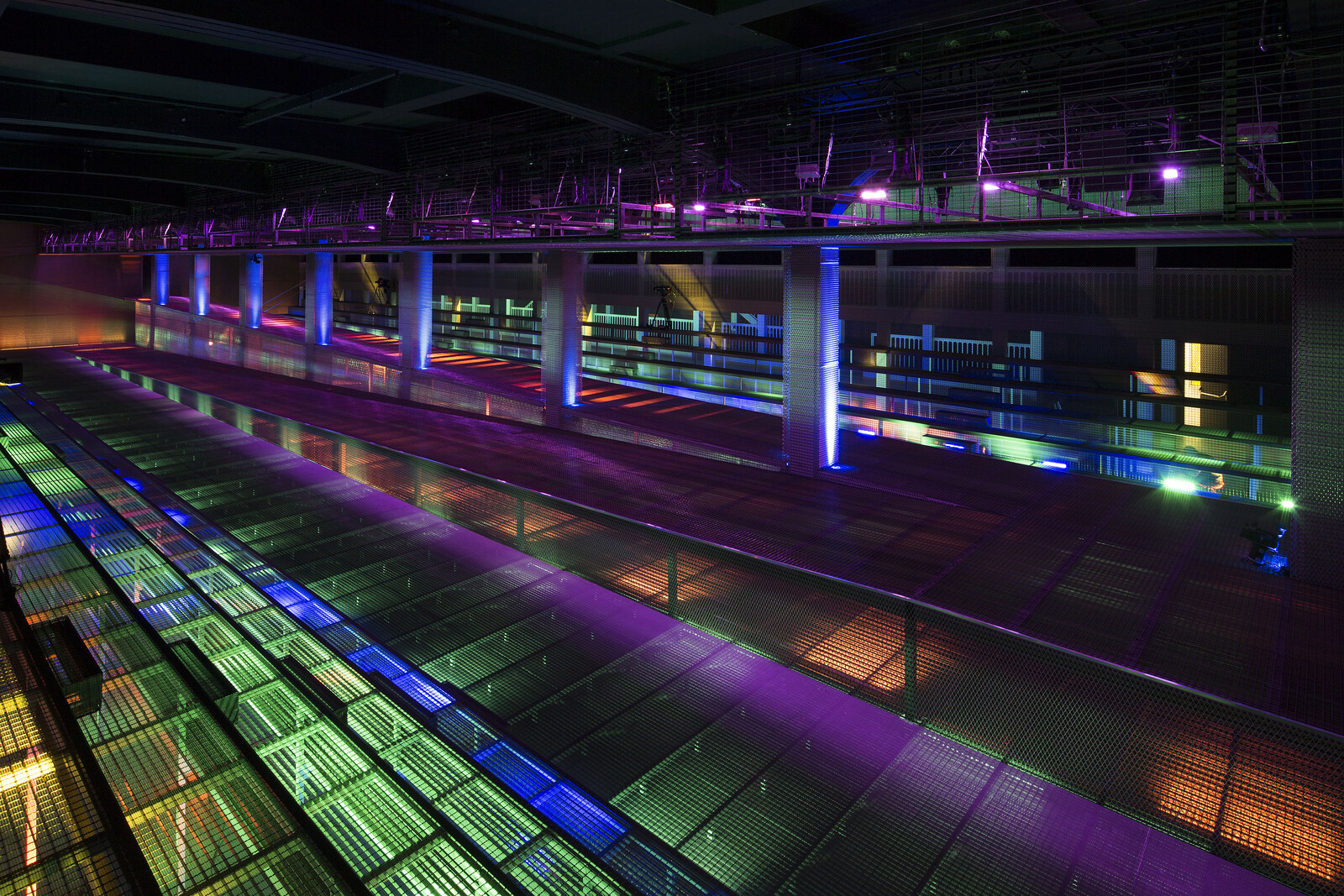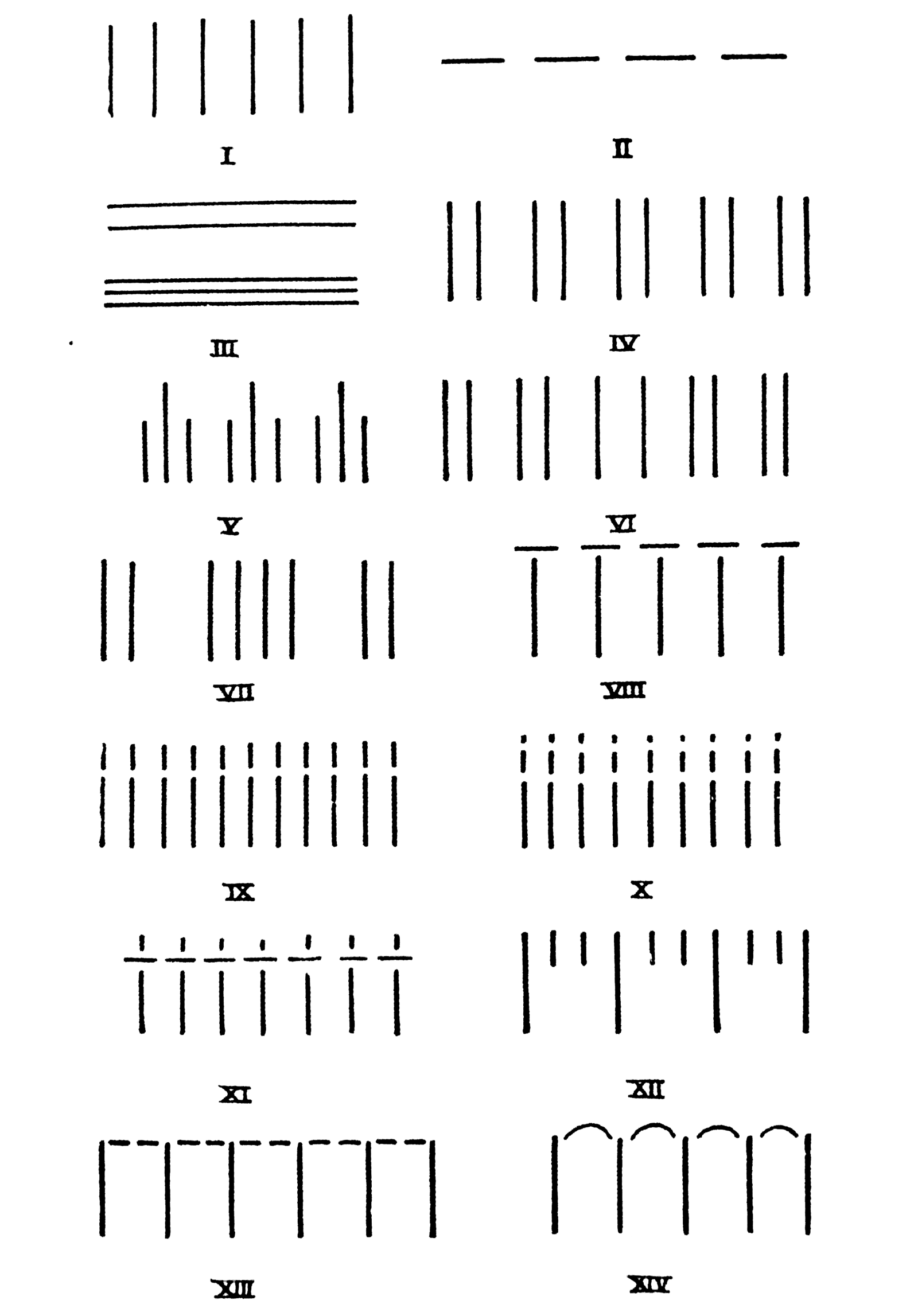From the point of view of the ordinary educated citizen … the World Encyclopaedia would be a row of volumes in his own home or in some neighboring house or in a convenient public library or in any school or college, and in this row of volumes he would, without any great toil or difficulty, find in clear understandable language, and kept up to date, the ruling concepts of our social order, the outlines and main particulars in all fields of knowledge, an exact and reasonably detailed picture of our universe, a general history of the world, and if by any chance he wanted to pursue a question into its ultimate detail, a trustworthy and complete system of reference to primary sources of knowledge.
—H. G. Wells1
On June 25th, 2018 The Intercept published an investigation into eight AT&T facilities in different cities in the US which acted as peering hubs for the NSA through the course of their surveillance program famously known as FAIRVIEW.2 The program was designed in 1985 to collect phone, internet, and e-mail data mainly of foreign countries’ citizens at major cable landing and switching stations inside of the country. Much has been said, written, and reported on both the NSA and FAIRVIEW, but relatively little has been published on the physical infrastructure that allowed spying to take place on such unprecedented scale. The facilities described in the report all share an aesthetic of total inaccessibility and anonymity: contemporary fortresses, with no windows or signs. They sit silently in urban landscapes, allowing a powerful infrastructure of surveillance to be hidden in plain sight, invisible to thousands of people passing by every day.
In our current age of surveillance capitalism, similar architectural strategies have been adopted by tech giants such as Google, Facebook, Apple, or Amazon for their server farms. While data centers are pivotal nodes in our social, political, cultural, and financial landscapes, their physical presence remains unassuming, banal, and anonymous. They mirror the asymmetric and abusive relationships between tech corporations and end-users.
A staggering 24,000 gigabytes of data is uploaded to the internet every single second,3 and propelled by the Internet of Things, 2.5 quintillion bytes of data are created each day. This figure grows exponentially. In fact, ninety percent of the world’s data was generated just in the last two years. Everything that happens online, and by extension, the entire spectrum of human-machine operations, depends on the industrial architecture of data. Here, our digital existences are both stored and mined in a perpetual cycle of protection and extraction.
Discussing the politics of the envelope at Transmediale in 2017, media theorist Tiziana Terranova pointed out the difference between the physical front-end and back-end of digital platforms such as Google or Facebook. On the one hand, these companies are housed in transparent, permeable, accessible, cool headquarters, while on the other, the actual machinery their software operates on is stationed in anonymous, impermeable, and impenetrable data centers. We are all familiar with the services our mobile phones provide, but very little of what is happening behind these screens can be accessed (or understood). The way data is captured, aggregated, and ultimately marketed remains opaque. In parallel, very little is known about those spaces where our data is stored. The network is not accountable, as its architecture remains invisible.
Data production, consumption, and aggregation continues to grows exponentially, and data centers are expanding rapidly as an urban typology.4 Built to shape our future, they are contributing to its destruction: if data centers were a country, they would be the eleventh most energy consuming nation in the world.5 Driven by the market imperative to provide and maintain a 99.9% up-time at any cost, data centers function with the comfort of redundancies embedded in their design, such as duplicate cooling infrastructure as a failsafe and diesel power in case of a power outage. Redundancy even translates in the form of a duplicate back-up building, identical in every way and located next to the original—the ultimate marketing tool to ensure customer satisfaction.
Serious concerns about the burden of such a voracious industry are starting to unfold. Troubled with the data center sector’s hunger for land and energy, the municipality of Amsterdam announced in July 2019 it would temporarily stop giving out building permits for new data centers.6 Amsterdam is one of the most important data hubs in Europe: its sixty-three data centers, more than any other major city in the world, account for 30% of data centers in the whole of Europe. Measured in electricity potential and not in square meters, their numbers have increased fast, with a steady 18.5% yearly growth of megawatts potential over the past eight years.7 The city fears it might not be able to deliver the energy capacity needed to sustain this rate of growth.
Identities and personhood are artificially assembled, morphed, and multiplied as data from digital interactions is processed and aggregated into alternative realities throughout server farms across the globe. All users are left with is fiction, and data centers are often broadcasted as fictions. Mainstream images of server farms suggest new extreme environments and new forms of techno-aesthetics, clearly inspired by science fiction that has pervaded a collective visual imaginary from cinema to fashion. As James Bridle has observed, “Inside, the buildings are deliberately designed to look like you would hope the internet would look like, [they] are meant to appeal—very explicitly meant to appeal—to the kind of sci-fi sensibility of network engineers.”8 Where marketing meets data real-estate, one should not surrender too easily to the fetish of the post-human/machine environment. Reality is often far less exciting and far more generic.
Automation is redefining much of the contemporary built environment, from harbors and green houses to distribution centers. The data center industry is an ideal lens to investigate the relationship between humans and non-human agents (or machines). On server farms, the presence of humans is increasingly occasional and residual. Data centers are extreme buildings built for machines. Are they a new form of post-human architecture?
From brief to construction, human space (offices, meeting rooms, receptions) in these gigantic structures is pushed to occupy increasingly small portions of the building’s overall size. Here, design becomes whimsical, folkloristic, even symbolic, acting as a form of compensation. Yet when looking in detail at the spaces entirely dedicated to machines, also known as white halls, it becomes evident that humans are not entirely out of the picture. The dimensions of spaces where servers are stacked are still based on a human body’s dimension to allow a handful of engineers to access the hardware a few times per year. Servers can operate in environments as warm as forty-five degrees Celsius, but in general, temperatures are kept at levels that are bearable for humans, at huge energetic costs. Light is present only for people to find their way. Data centers are an architecture for machines, but they are still modelled on human dimensions and needs.
Yet progressive virtualization and unmanned data centers are quickly becoming a reality. Server farms are currently moving away from buildings hosting machines and turning into complex machines in and of themselves. A transition is underway from a human-to-machine landscape to a machine-to-machine one. This is an emerging regime where threats, management, repair, and control are fully organized by algorithmic intelligences and machine interaction. Humans are relegated to secondary roles, or worse: to marketing materials. Some companies stage grotesque security theaters with armed guards and control rooms, only in order to reassure clients and investors.
For architects, the open question is whether the transition from human-machine to machine-machine can be taken as an opportunity to redefine the architecture of data centers and question their role, presence, accessibility, and impact. What would it mean to start thinking about data centers as the monuments of the twenty-first century, as crucially functional but also highly symbolic components in our built environments, open and transparent to their context, acting as platforms to negotiate new forms of human-to-machine cooperation? Can we imagine new models of a data permaculture, relying on the unstable course of the sun and the winds for energy, and decide to harvest data only when resources are available? Or conversely, what if we embrace the notion of an impermeable architecture completely liberated from humans, one where humans are reduced to an occasional visitor of a lightless, hot, ultra-efficient machine environments?
H. G. Wells, “World Encyclopaedia,” lecture delivered at the weekly evening meeting of the Royal Institution of Great Britain, November 20, 1936, published in World Brain (Garden City, NY: Doubleday, Doran & Co., 1938).
Ryan Gallagher and Henrik Moltke “The Wiretap Rooms,” The Intercept, June 25, 2018, ➝.
FX Tools, “The Internet in Real Time,” ➝.
“Cisco Global Cloud Index: Forecast and Methodology, 2016–2021 White Paper,” November 19, 2018, ➝.
Tom Bawden, “Global warming: Data centres to consume three times as much energy in next decade, experts warn,” The Independent, January 23, 2016, ➝.
Ellen Proper, “Too Much Information: Amsterdam Hits Pause on Data Center Boom,” Bloomberg, July 16, 2019, ➝.
Kim Loohuis, “Amsterdam’s datacentres face challenges to retain high growth,” Computer Weekly, July 9, 2019, ➝.
James Bridle, “Data Centres and Secret Servers,” Icon, August 19, 2011, ➝.
Intelligence is an Online ↔ Offline collaboration between e-flux Architecture and BIO26| Common Knowledge, the 26th Biennial of Design Ljubljana, Slovenia.
Category
Subject
This text reflects on research developed at OMA and in the context of “ADS8. Data Matter: Digital Networks, Data Centers and Post-Human Institutions,” a studio unit led by Kamil Dalkir, Marina Otero Verzier, and Ippolito Pestellini Laparelli at the Royal College of Arts in London.
Intelligence is an Online ↔ Offline collaboration between e-flux Architecture and BIO26| Common Knowledge, the 26th Biennial of Design Ljubljana, Slovenia, within the context of its exhibition catalogues.














